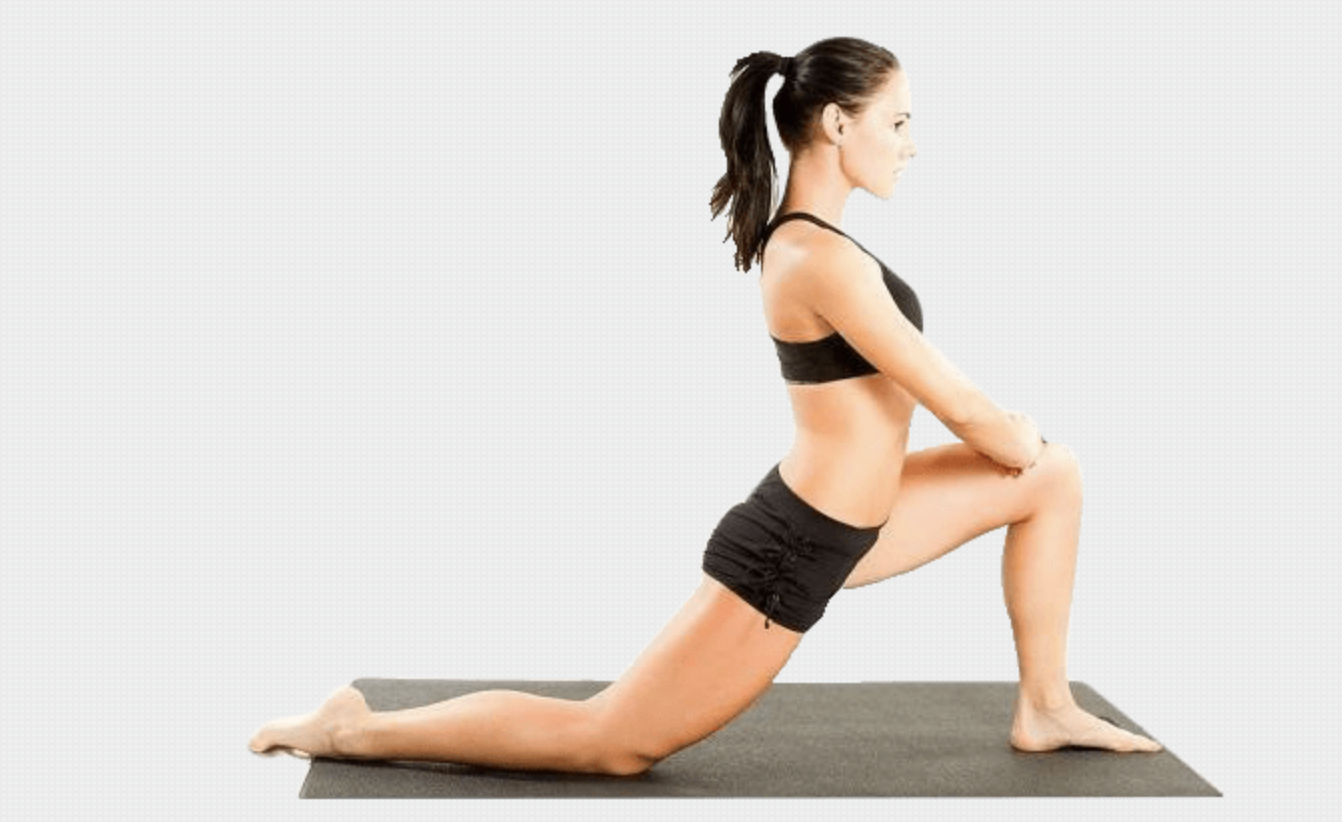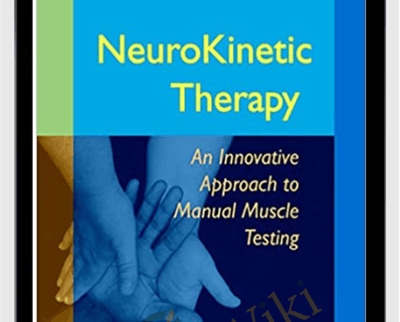Description
Buy Hip Control – Eric Wong Course at esyGB. You will have immediate access to the digital downloads in your account or your order email.
Hip Control – Eric Wong
Hey, Coach E here and what we’re about to discuss is going to FLY IN THE FACE of some of the most popular concepts in fitness and working out over the last few years…
That’s right – if you’ve been following this advice, you’ve been messing up your body.
You might’ve heard these concepts from some of the biggest websites, magazines and trainers and you might get pissed off when you hear what’s up.
Here’s the EMBARRASSING part – I’ve been one of the trainers sharing the very same advice I’m about to admonish.
Yep, I guess my wife is right – I don’t know everything.
But I’m obsessed with the body and how to get it feeling and moving better, so I’m always studying and experimenting and I’d be doing you wrong if I didn’t come clean so you don’t suffer the consequences from following this common method.
No, I’m not talking about any of that stupid stuff you see on infomercials designed for the sole purpose of parting you from your hard-earned money…
What we will talk about is a concept that’s moved the fitness industry in the right direction and proved beneficial to both athletes and people working out to be fit and healthy alike…
The problem is dysfunction, pain and injuries are likely to occur over time – not immediately – because this method of training is BIOMECHANICALLY IMBALANCED.
How This Popular Fitness Concept That Creates Imbalances In Your Body Came To Be…
I learned about this method from my first mentor in the fitness industry named Paul Chek…
From 2005-2007, I invested around $10k in books, courses and intensives to learn as much as I could from him.
That was after around $40k for a 5 year honours degree in Kinesiology lol!
While common today, Paul was the first person I’d ever heard talk about creating resistance training programs based on something called the MOVEMENT PATTERNS, instead of bodybuilding style body part training (chest, bi’s, quads, abs, etc).
Paul’s system included 7 distinct movement patterns: squat, lunge, bend, push, pull, twist and gait.
I quickly implemented the system and found it to not only improve fitness and performance, but also EFFICIENCY, as it requires less time in the gym.
This was especially beneficial to the combat athletes I trained who were already in the gym 2-3 hours, 6 days a week.
Over the next few years, training based on “movements not muscles” became more and more popular with many other teachers promoting it including Gray Cook, creator of the Functional Movement Screen (FMS).
It was in 2008 when Men’s Health released a book called “The New Rules of Lifting” that the concept officially went mainstream.
Since then, the trend has only grown stronger with the growth of powerlifting, weightlifting and the explosion of CrossFit, which all focus on these same exercises and movement patterns.
Here’s The BIG Problem Focusing on Lower Body Compound Exercises Like Squats and Deadlifts and Always Being Told to “Squeeze Your Glutes!”
While each of these movements focuses on the muscles in your body in a different proportion, they’re all essentially the same in that they train the muscles that make you stand up against gravity.
It doesn’t matter whether you’re doing a front vs back squat, stationary vs walking lunge or stiff-leg vs trap bar deadlift – you’re essentially training the same joint movements: hip extension, knee extension and to lesser extent, hip abduction and external rotation.
These exercises also work virtually the same muscles: the gluteus maximus, quadriceps and to a lesser extent, the hamstrings and gluteus medius.
So by following this system (not to mention the popular cue telling you to “squeeze your glutes”) you’re training the same movements and muscles while neglecting their opposites, creating muscular imbalances that ultimately lead to dysfunction, pain and worst of all – INJURY.
Here’s a Short List of Just Some of the Problems That Result From Continuing to Neglect These 3 Muscle Groups:
Because the human body is an interconnected system where every movement requires a complex interplay of muscle activation and relaxation, dysfunction in one area often results in problems in a completely different area.
This is called compensation and your body is a master at it.
Then, it’s only a matter of time until nagging pains creep up on you then one day result in an injury keeping you from doing the things you love.
In fact, these are some of the most popular issues people run into:
- LOW BACK PAIN and SCIATICA – lumbar stabilizer weakness and limited hip flexion and internal rotation are all proven to be strong factors contributing to chronic low back pain [2]
- RESTRICTED HIP AND KNEE MOBILITY – hip extension, flexion, internal rotation and abduction are most limited as is knee extension
- HIP PAIN – especially femoral acetabular impingement (FAI) and pain related to arthritis [3]
- RECURRING MUSCLE PULLS – the quads, hamstrings and groin are particularly susceptible [4]
- KNEE PAIN – the body compensates for stiff hips via the knees, getting them to do things they’re not designed for resulting in knee pain aka patellofemoral pain syndrome (PFPS) [5] [6]
- ACL INJURIES – research shows limited hip mobility is a strong predictive factor for ACL injury risk [7] [8]
- DUCK FEET – because the external hip rotators are stronger compared to the internal rotators, they turn the feet out, causing further complications like flat feet and medial knee pain
Now that you’ve got a greater understanding of how the body and its muscles work, you can train it to optimize all of its natural abilities instead of focusing on just a few and creating imbalances.
The Little-Known Functions of the 3 Most Neglected Muscle Groups and How to Properly Train them to Restore Muscular Balance, Banish Pain and Improve Mobility and Performance
If you didn’t guess, the 3 muscle groups and associated movements neglected by most exercisers today are:
Neglected Muscle Group #1:
The Hip Flexors
The primary muscles that internally rotate the hip are the gluteus minimus, tensor fascia latae (TFL) and when the hip is flexed to 90° – the piriformis.
These muscles are by no means household names and if you already know them all, your knowledge of the human body is leaps and bounds ahead of most people.
The muscles of the hip flexor group include the iliacus, psoas, tensor fascia latae, rectus femoris and pectineus and as their name indicate, they flex the hip.
I separate the iliacus and psoas instead of saying iliopsoas because they have different functions, just like the function of the rectus femoris differs from the other 3 quadricep muscles.
As we discussed in the previous section, a little-known function of the psoas is LUMBAR SPINE STABILITY. [9]
Looking at the anatomy of the psoas, you can see how it attaches to all of the vertebrae in the lumbar spine and because of this, it also functions to extend not flex the lumbar spine, contrary to what many used to think.
Here’s the kicker – with 80%+ of people experiencing low back pain at some point in their lives, and flexion of the lumbar spine being one of the top causes, it’s NO WONDER low back pain continues to persist for so many, despite more people exercising than ever before.
It couldn’t be any other way since the only thing taught about the psoas and hip flexors is that they need to be stretched.
However, just like the quads, glutes, lats, biceps and every other muscle group you know, the hip flexors need to be strengthened for both health and performance goals.
Neglected Muscle Group #2:
The Hip Adductors
The primary muscles that adduct the hip are the adductor magnus, longus and brevis as well as the pectineus.
And while the name of these group indicate their primary function of hip adduction, this movement is not one often challenged whether we’re standing or lying down supine, prone or on the side.
The more important function of the adductors in conjunction with the hip abductors is PELVIC STABILITY when on 1-leg such as in walking and running.
The graph below shows muscle activity during running where the adductors fire when the leg is in 2 positions:
1) At toe off to decelerate hip extension (eccentric) and contribute to hip flexion (concentric).
2) Right before heel strike, where the adductors decelerate hip flexion (eccentric) and contribute to hip extension (concentric).
The different heads of the adductors also have different roles, where the adductor magnus contributes to hip extension while the adductor longus and brevis contribute to hip flexion.
Based on this knowledge, it’s clear that the adductors are not only a very important muscle group in the body, but one with complex roles not trained by that stupid hip adductor machine you see in gyms.
So the fact that the only thing we’re taught to do to the adductors is stretch them shows there’s a lot of potential waiting to be tapped into once you begin properly training this muscle group.
Neglected Muscle Group #3:
The Hip Internal Rotators
The primary muscles that internally rotate the hip are the gluteus minimus, tensor fascia latae (TFL) and when the hip is flexed to 90° – the piriformis.
These muscles are by no means household names and if you already know them all, your knowledge of the human body is leaps and bounds ahead of most people.
Now, you may think, “Why do I need hip internal rotation?”
Here are a few activities that require active hip internal rotation or the hip internal rotators to stabilize the pelvis:
Hitting drives and irons CONSISTENTLY requires full hip mobility and control
While it’s clear internal hip rotation is an important movement, what you don’t see is that these muscles are key contributors to a critical aspect of proper hip function called JOINT CENTRATION.
Joint centration is all about keeping the head of the femur (thigh bone) centred in the acetabulum (socket) so it moves smoothly without any impingements or bone-on-bone impediments that will cause pain and injury.
you squat or deadlift and push your knees out, you’re strengthening the external rotators and without also strengthening the internal rotators, your hip joint will get out of balance, resulting in dysfunctional movement patterns, mobility restrictions and eventually, pain and injuries.
Now, if your head is spinning a little bit, don’t worry, I’m going to make it DEAD SIMPLE to correctly implement everything we’ve discussed up to this point…
Properly Training These 3 Neglected Muscle Groups Does NOT Mean Just Stretching
If you search for exercises for the hip flexors or adductors, you’ll mostly find static stretches (and you won’t find much at all for the internal rotators).
That’s because the typical approach treats these as “problem muscles” that tighten up…
And the common (and incorrect) approach to tight muscles is static stretching.
Negative acute effect of static stretching on performance pre-workout [10]
Static stretching reduces repeated sprint ability [11]
Static stretching impairs explosive performance for at least 24 hours [12]
Static stretching before endurance run (30 min) decreases performance, increases energy cost [13]
While length of these muscles is an issue that must be addressed, the reason why they’re tight is counter-intuitive – they’re typically undertrained and as such, WEAK!
And because the opposite muscle groups are much stronger because of all the work they get, a strength imbalance occurs.
Your neuromuscular system sees this and tightens these untrained muscles up to restrict movement and prevent injury.
This is a primitive reflex developed to help you stay alive because if you were allowed full range of motion without the strength to control the range, your risk of injury would increase and getting hurt out in the jungle or savannah would be a bad idea from a survival perspective.
So how do we properly train these neglected muscle groups and restore balance, eliminate dysfunction and improve mobility?
I’ve simplified the process for you so you can put it to work immediately:
INTRODUCING HIP CONTROL:
Your Blueprint for Greater Lower Body Strength, Stability and Mobility and Eliminating the Problems Associated with Muscular Imbalances
Hip Control is designed to restore the natural function and movement of your hip joint to eliminate problems like recurring back pain, hip and knee pain, inflexibility and immobility and injuries due to muscular imbalances.
You’ll encounter a number of techniques in the course, including the following:
Technique # 1: Dissociation
Dissociation creates joint and movement independence in your body by breaking coupled movements.
There are 4 primary coupled movements affecting the hip that must be broken to restore proper function using the Dissociation technique, otherwise you’ll never restore the natural capabilites of your body.
Technique #2: End Range Activation Sequence
To most effectively increase range of motion, you need to strengthen the muscles that can act at that range.
At every end range of motion you can strengthen 3 groups of muscles: the muscles that take you into the range, take you out of the range and the rotators.
By strengthening all 3 groups, you’re telling your neuromuscular system, “We’re strong and stable here – let us use it!”, preventing the reflexive tightening of muscles.
If you’re looking for greater flexibility and mobility, the End Range Activation Sequence is your ticket.
Technique #3: Full Range of CONTROL
My favourite definition of movement control is from movement teacher Moshe Feldenkrais who defined it as “movement reversibility”.
Movement reversibility means that at any point through a range of motion, you can stop and resume or reverse that motion along the same path.
By utilizing techniques that develop full range of control (ROC), you’re building strength and stability through the full range, which decreases injury risk.
You’re also strengthening the passive tissue system, including ligaments and other passive joint structures, for added “backup” stability in case of muscular overload due to fatigue or motor control errors.
These are just 3 of many techniques in Hip Control that will help restore your body’s full function and mobility.
But it’s not just the innovative techniques you’ll learn that get results, but the SEQUENCE in which the techniques are executed.
12-Week Hip Control Course Overview
Hip Control isn’t just a collection of random exercises…
It’s a 12-week guided course where you’re introduced to various techniques in the CORRECT SEQUENCE and everything is laid out in any easy-to-follow format so all you’ve got to do is “plug and play”.
I’ve designed the course like this for 2 reasons:
- To give you only what you need, when you need it to so you don’t get crushed by information overload
- So you can implement the program into your life without sacrificing time dedicated to the things you love like family and hobbies
PLUS, the routines are designed for the busy person in mind requiring ZERO equipment and just 15-20 minutes, 4 days a week – tack these routines onto the end of your already scheduled workouts or do them at home.
And most importantly, when you follow the course as designed you’ll quickly feel stronger, more stable and move with greater freedom than you ever have before.
• Basic movements and hip joint anatomy
• Assessments including a challenging and complex movement goal
• The concepts of alignment and joint centration with exercises
• An introduction to dissociation with exercises to begin the process
• Restoring soft tissue quality and function with Active SMR
• Open vs. closed chain movement
• Additional movements of the hip
• Additional exercises to train dissociation
• Hip Control Routine #1 (HC1)
• Introduction to the key positions of Hip Control
• Flexibility vs. mobility
• Scaling movements
• Progression of HC1
• Refinement of the Key Positions
• Training on and exploration of the lower body Fundamental Movement Patterns
• Hip Control Routine #2 (HC2)
• The M/AP: Movement and/or Activation Pattern
• Progression of HC2
• Mid-terms! Re-assessment to gauge progress
• End Range Activation to gain and solidify mobility: agonists, antagonists, rotators
• Hip Control Routine #3 (HC3)
• Control = Movement Reversibility
• Progression of HC3
• Passive tissue strengthening
• Hip Control Routine #4 (HC4)
• Transitions
• Progression of HC4
• Ensuring measurable progress through aids i.e. increasing height with hovering side kicks
• Hip Control Routine #5 (HC5)
• Progression through increasing complexity for continued neuromuscular adaptation
• Finals! Re-assessment #2
• Progression of HC5
This is Hip Control in a nutshell.
But that’s not all…
Buy Now!
Shopping Information
– We provide digital products. Most of products will come to you immediately. But for Pre-Order product, we need 3-7 days to order it for you.
– After you order, the system will create your account and send it to your email. And after your payment, you will receive the download link at the account or directly via your email. If you have any problems with your order, you can contact: [email protected].
– If you cannot find the download link, please don’t worry about that. We will update and notify you as soon as possible at 8:00 AM – 8:00 PM (UTC+8).
Let’s get things started! We will go with you!
Buy the Hip Control – Eric Wong course at the best price at esy[GB]. Upon completing your purchase, you will gain immediate access to the downloads page. Here, you can download all associated files from your order. Additionally, we will send a download notification email to your provided email address.
Unlock your full potential with Hip Control – Eric Wong courses. Our meticulously designed courses are intended to help you excel in your chosen field.
Why wait? Take the first step towards greatness by acquiring our Hip Control – Eric Wong courses today. We offer a seamless and secure purchasing experience, ensuring your peace of mind. Rest assured that your financial information is safeguarded through our trusted payment gateways, Stripe and PayPal.
Stripe, known for its robust security measures, provides a safe and reliable payment process. Your sensitive data remains confidential throughout the transaction thanks to its encrypted technology. Your purchase is fully protected.
PayPal, a globally recognized payment platform, adds an extra layer of security. With its buyer protection program, you can make your purchase with confidence. PayPal ensures that your financial details are safeguarded, allowing you to focus on your learning journey.
Is it secure? to Use of?
- Your identity is kept entirely confidential. We do not share your information with anyone. So, it is absolutely safe to buy the Hip Control – Eric Wong course.
- 100% Safe Checkout Privateness coverage
- Communication and encryption of sensitive data.
- All card numbers are encrypted using AES with a 256-bit key at rest. Transmitting card numbers occurs in a separate hosting environment and does not share or store any data.
How can this course be delivered?
- After your successful payment this “Hip Control – Eric Wong course”, Most of the products will come to you immediately. But for some products were posted for offer. Please wait for our response, it might take a few hours due to the time zone difference.
- If this occurs, please be patient. Our technical department will process the link shortly after, and you will receive notifications directly via email. We appreciate your patience.
What Shipping Methods Are Available?
How Do I Track Order?
- We promptly update the status of your order after your payment is completed. If, after 7 days, there is no download link, the system will automatically process a refund.
- We value your feedback and are eager to hear from you. Please do not hesitate to reach out via email us with any comments, questions and suggestions.
Only logged in customers who have purchased this product may leave a review.





 Purchase this course you will earn
Purchase this course you will earn 





Reviews
There are no reviews yet.